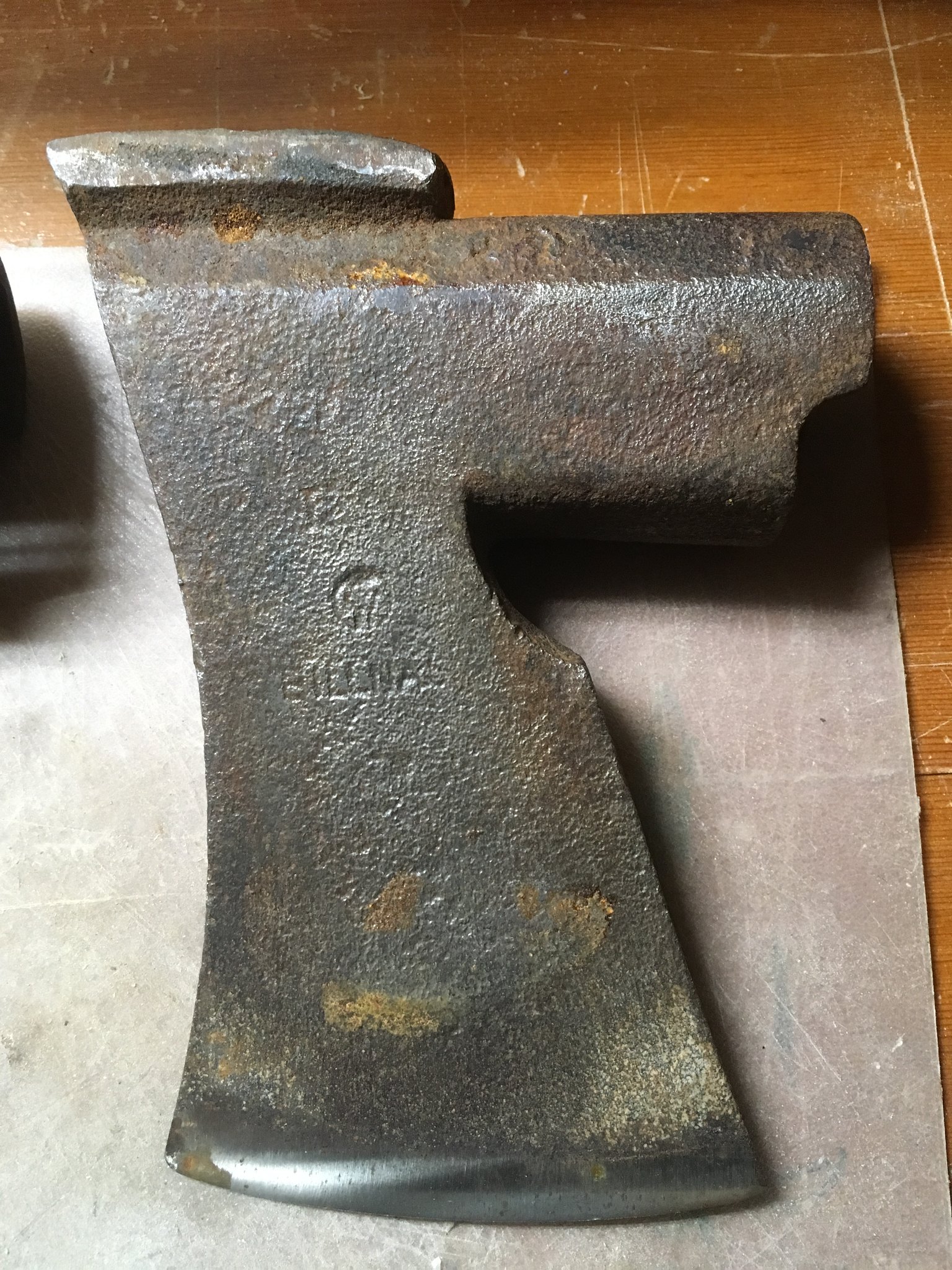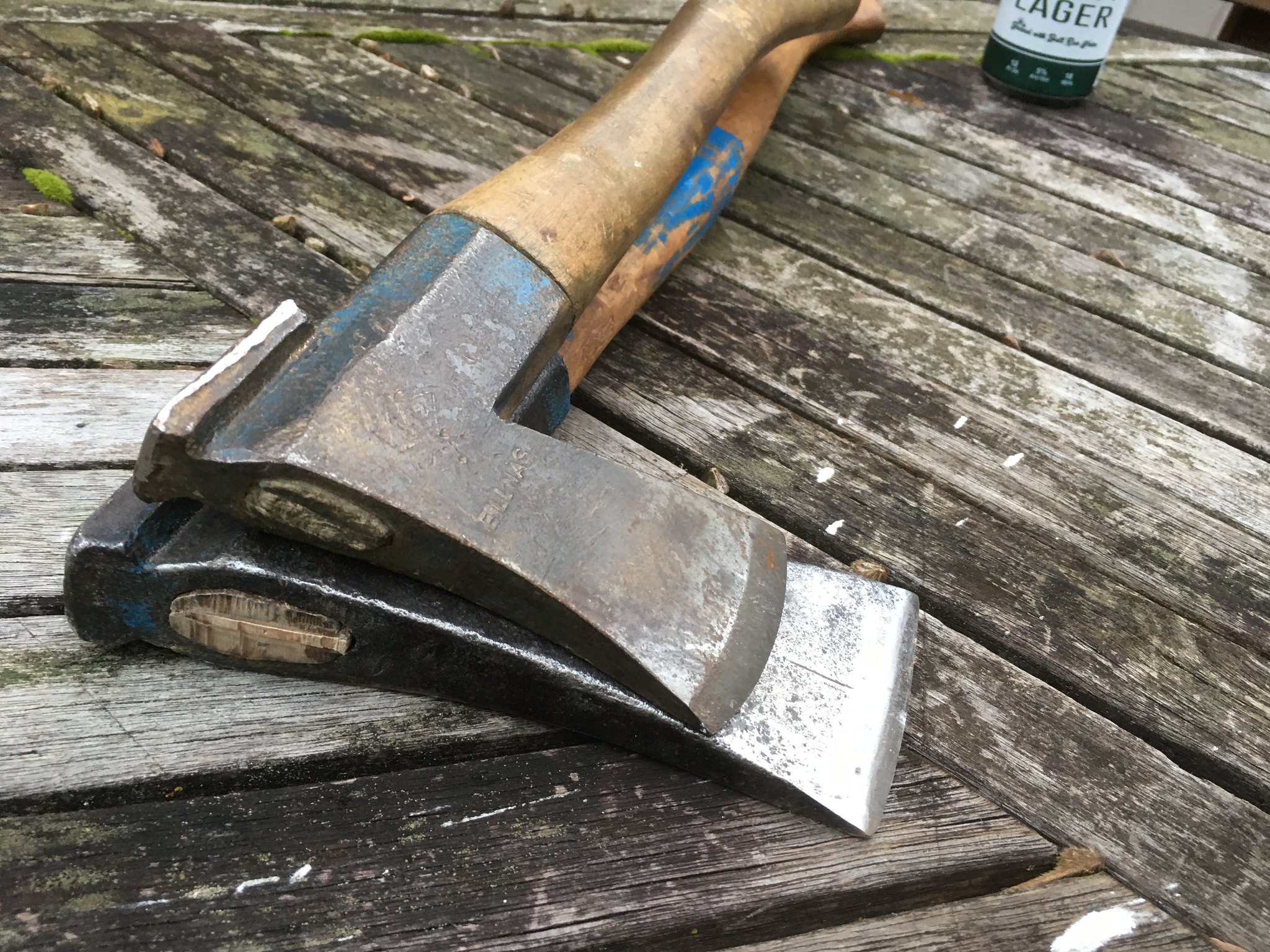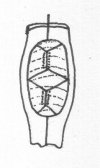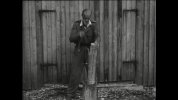Cultural Learnings of Kirves Make for Benefit Glorious Study of Chopping - (That is how my Finnish probably comes across lol)
First of all, I need to say Olli is a good character.
I dont know the whole story behind these axes other than their most recent adventure was travelling halfway around the globe from Finland to Oregon after a solid package ransacking at customs stateside.
Hoping he gets a chance to share some background on them with us at his leisure. He is running 10hrs ahead in his neck of the woods compared to here.
Anyway, here is a stash of Finnish kirves. I know axes all do the same thing if they are sharp regardless of where they are from but these are really pretty neat to be honest. A couple of the pictures arent the best because of the lighting in my hovel of a shop.

Kemi 12.2 with interesting brand/marking I cant make out but it doesnt look like Billnäs or Kellokoski, more like Kole or Kote:

Kemi 12.2 Kellokoski:

Kemi 12.3 Im guessing given my impression its overall dimensions:

Billnäs 61.2 carving hatchet:

Kellokoski 15.2 carving hatchet:

Billnäs 61.2 (raised mark) handled:

All of these are outstanding. The handled hatchet is truly a wicked little thing. I dont think Id seen these hatchet models previous to our conversations here. I may have but without something to put them into scale in a photo they look pretty much like their larger counterparts. I had to immediately start using it to carve a birch handle for the smaller Kellokoski 15.2. I didnt know anything about these little ones but they are, for a lack of a better word, surprising. Sharp and accurate would be part of the description I suppose.
To be honest, with all the stuff hanging around here I only have a couple of real hatchets. I primarily use a 6lb maul and a boys axe to do most things besides carve. I would consider this an upgrade from the little Fiskars I have used for carving until now
Olli also mentioned that in Finland that axe and hatchet are expressed with the same word.
Here is the 61.x next to a can for scale

After using this one for several hours I think I better understand a possible benefit of the stepped shelf hang. They look great and are probably a little more solid when they are hung where the handle tapers to disappearing under the collar. But if you are going to use it choked up for carving then it makes for a nice grip without an abrupt transition.

Personal initials, institutional abbreviation, or double digit numbering?

Here it is for comparison to a model 7 (a full size model). There is a definite family resemblance:


*The handle I am working on has a pretty solid knot in it. This stick might end up not being a handle but rather have one end fitted for the hatchet head sized eye and the other generally fitted for the Kemi eye. This might give me something to temporarily mount the heads on for sharpening or profiling the edges. That might sound like a strange use of time and materials but I find the shapes of the heads hard to grab in a vise without handles - I prefer to do work on the heads off the handles but without a grindstone it might make sense just to have a reusable jig (?) system








 [/url][/url][/URL][/URL]
[/url][/url][/URL][/URL]












